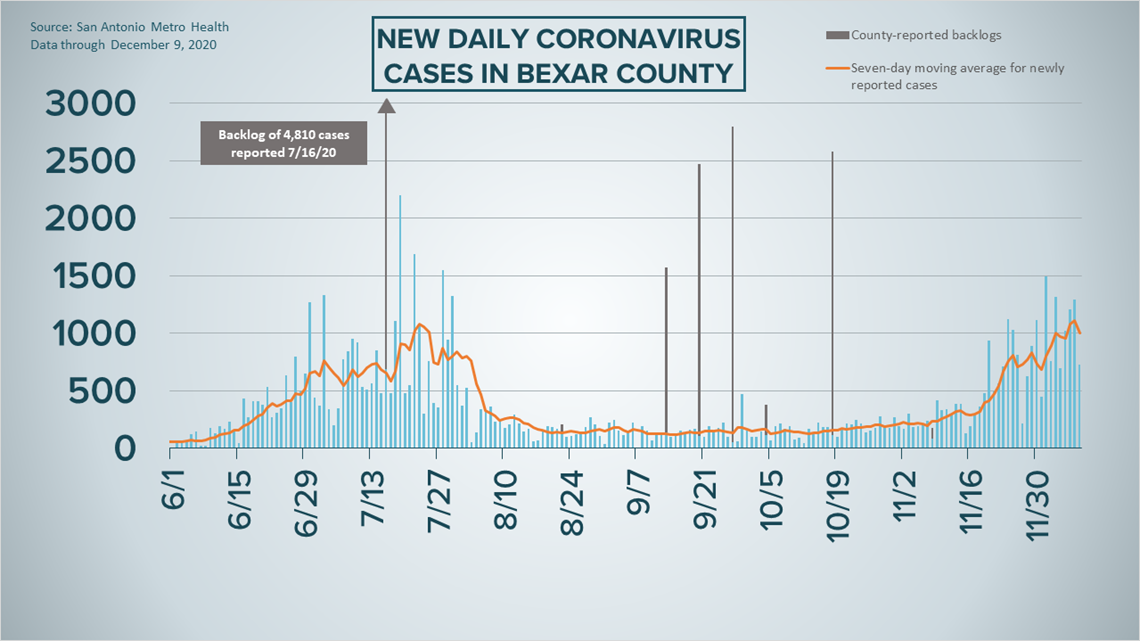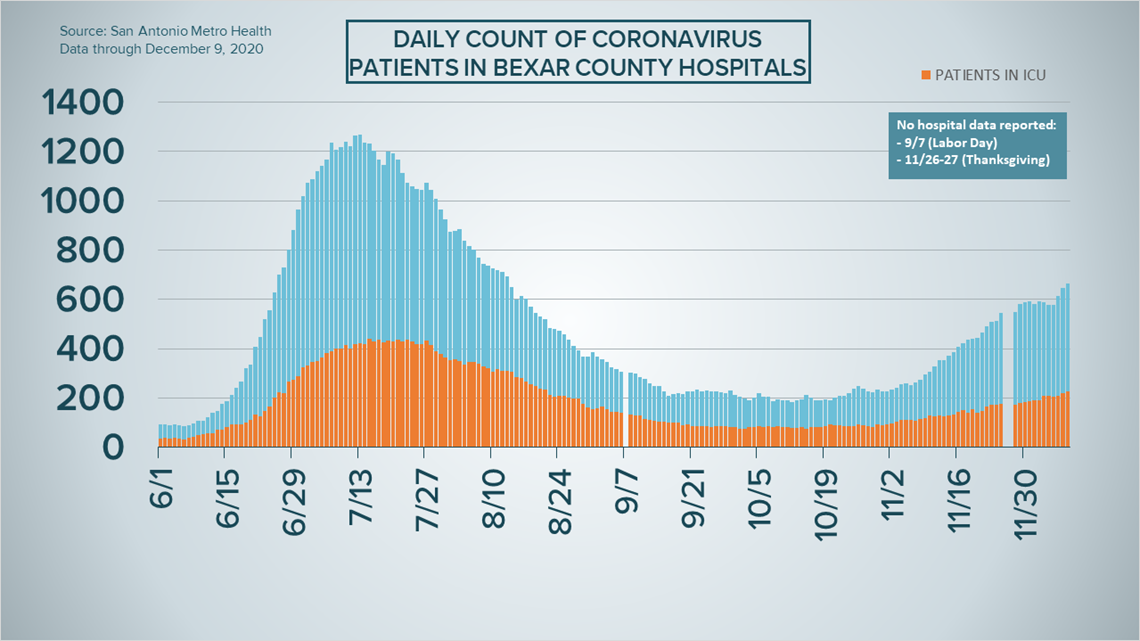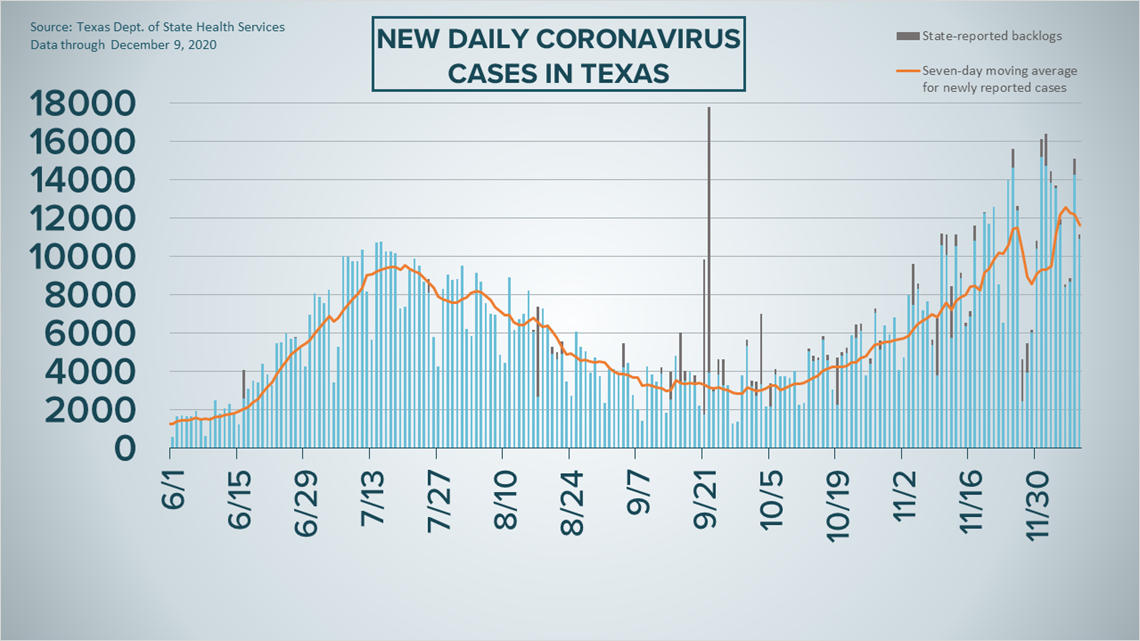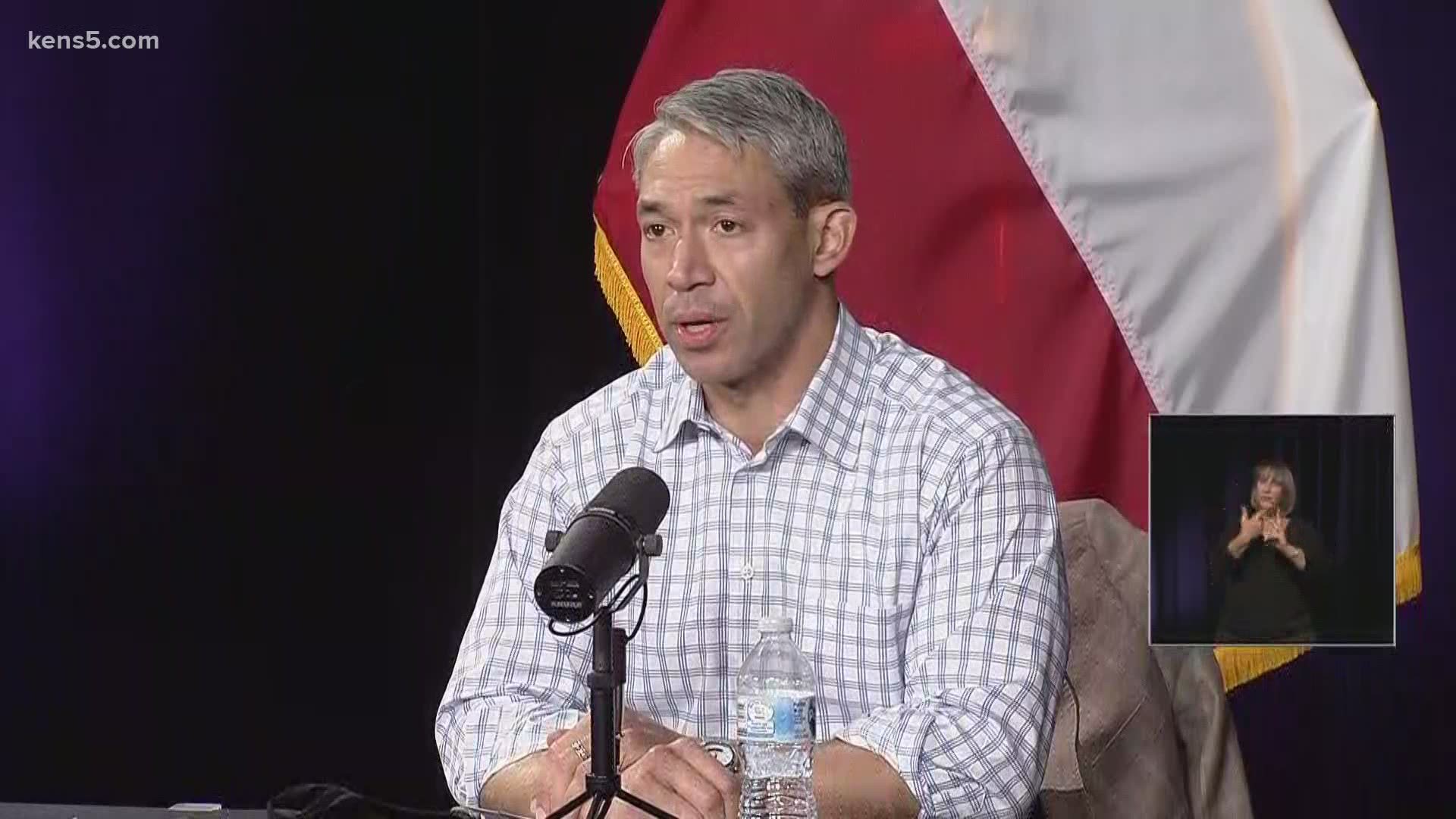SAN ANTONIO — We're tracking the latest numbers from the coronavirus pandemic in San Antonio and across Texas. Here are the latest numbers reported by Bexar and surrounding counties:
- Bexar County: 730 new cases were reported on Wednesday, bringing the total number of cases to 90,220. No new deaths were reported, keeping the death toll at 1,406.
- Hays County: Officials in Hays County on Wednesday reported 91 new cases in the county and one additional COVID-related fatality. As of Wednesday, there are a total of 7,946 lab-confirmed local cases (879 of which are active), while the death toll remained at 107. 6,960 residents have recovered from the virus.
- Comal County: Comal County reported an additional 74 coronavirus cases – 23 confirmed, 51 probable – on Wednesday, bringing its total to 5,134.
The local death toll remains at 133. The county estimates 636 active cases on Tuesday, while 4,365 residents have recovered.
More county case information is available through the Texas Department of Health Services COVID-19 dashboard.
How Bexar County is trending
We've tracked how many coronavirus cases have been confirmed in Bexar County from the time officials began reporting cases in March 2020. The graphic below shows the number of cases since June and charts those daily case numbers along a 7-day moving average to provide a more accurate picture of the overall coronavirus case curve in our area and the direction we're trending amid the pandemic.
On Wednesday evening, Mayor Ron Nirenberg reported an additional 730 novel coronavirus cases in Bexar County. That total is markedly lower than Tuesday's tally of nearly 1,300, but the development brings the number of local diagnoses to 90,220 during the ongoing pandemic. Nirenberg said the death toll stays pat at 1,406 after no new COVID-19-related deaths.


The number of El Paso-area residents receiving treatment for COVID-19 symptoms in Bexar County hospitals is down to 15, but the overall number of hospitalizations increased to 663 on Wednesday. Our area hasn't seen that many hospitalizations since August 13.
Of those, 226 patients are in intensive care while 119 are on ventilators—both those numbers are up from Tuesday's figures.


Coronavirus in Texas
The total number of novel coronavirus cases in the state since the pandemic began grew by 12,451 on Wednesday, according to the Texas Department of State Health Services.
That total includes 10,930 new confirmed cases and 248 cases attributed to backlogs not previously reported in the state's total (more details can be found at the top of this page).
As of Wednesday, almost 1.35 million Texans have been diagnosed with COVID-19. Of those, 1.28 million diagnoses are confirmed via molecular testing, while another 66,244 are positive antigen tests.


State health authorities also reported 273 additional virus-related deaths on Wednesday—the highest fatality figure since August 19. At least 23,081 Texans have died from COVID-19 complications.
The number of COVID-19-related hospital patients rose by a relatively small 25 overall patients to 9,053 on Wednesday. Meanwhile, the state estimates that 1.062 million Texans have recovered, while 202,457 Texans remain ill with COVID-19.
The latest update from the Texas Education Agency showed that there have been 65,552 cumulative cases among staff and students across the state through Nov. 29. That number comprises 40,985 positive student cases and 24,567 staff cases. More information can be found here.
The TEA releases new data on school cases every Thursday.
Latest Coronavirus Headlines
- Bill Nye uses household props, TikTok to illustrate how masks work
- San Antonio-area schools to continue in-person learning amid local health warnings
- VERIFY: AstraZeneca COVID-19 vaccine does not use fetal cells
- H-E-B reportedly facing bullying over mask enforcement
- UK probing if allergic reactions linked to Pfizer vaccine
- San Antonio schools in 'Red Zone' | Here is how the Metro Health directive on schools affects your family
- Vaccines won't curb COVID-19 spread in US until late spring, White House report says
- VERIFY: Newly vaccinated people won’t spread COVID-19 to the immunocompromised
- Election results, COVID-19, Kobe Bryant lead Google's top 2020 searches
- Gov. Abbott speaks in White House COVID-19 vaccine panel
Coronavirus symptoms
The symptoms of coronavirus can be similar to the flu or a bad cold. Symptoms include fever or chills, cough, shortness of breath or difficulty breathing, fatigue, muscle or body aches, headache, new loss of taste or smell sore throat, congestion or runny nose, nausea or vomiting and diarrhea, according to the Centers for Disease Control.
Most healthy people will have mild symptoms. A study of more than 72,000 patients by the Centers for Disease Control in China showed 80 percent of the cases there were mild.
But infections can cause pneumonia, severe acute respiratory syndrome, kidney failure, and even death, according to the World Health Organization. Older people with underlying health conditions are most at risk.
But infections can cause pneumonia, severe acute respiratory syndrome, kidney failure, and even death, according to the World Health Organization. Older people with underlying health conditions are most at risk.
Experts determined there was consistent evidence these conditions increase a person's risk, regardless of age:
- Chronic kidney disease
- COPD (chronic obstructive pulmonary disease)
- Obesity (BMI of 30 or higher)
- Immunocompromised state (weakened immune system) from solid organ transplant
- Serious heart conditions, such as heart failure, coronary artery disease, or cardiomyopathies
- Sickle cell disease
- Type 2 diabetes
The CDC believes symptoms may appear anywhere from two to 14 days after being exposed.
Human coronaviruses are usually spread...
- Between people who are in close contact with one another (within about 6 feet).
- Through respiratory droplets produced when an infected person coughs, sneezes or talks. These droplets can land in the mouths or noses of people who are nearby or possibly be inhaled into the lungs.
- Some recent studies have suggested that COVID-19 may be spread by people who are not showing symptoms.
Help stop the spread of coronavirus
- Stay home when you are sick.
- Eat and sleep separately from your family members
- Use different utensils and dishes
- Cover your cough or sneeze with your arm, not your hand.
- If you use a tissue, throw it in the trash.
Find a Testing Location
City officials recommend getting a COVID-19 test if you experience fever or chills, cough, shortness of breath or difficulty breathing, fatigue, muscle or body aches, headache, new loss of taste or smell, sore throat, congestion or runny nose, nausea or vomiting, or diarrhea.
San Antonio operates several no-cost testing locations, including two walk-up locations open Monday-Sunday from 10 a.m. until 2 p.m.:
Cuellar Community Center
5626 San Fernando St.
San Antonio, TX 78237
Ramirez Community Center
1011 Gillette Blvd.
San Antonio, TX 78224
Additionally, Freeman Coliseum offers drive-through no-cost testing from Monday through Sunday between 9 a.m. and 4 p.m. An appointment is required and can be made either online or by calling (833) 213-0643.
Here's a Testing Sites Locator to help you find the testing location closest to you in San Antonio.

